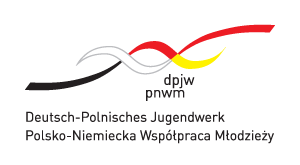 MMR - MODEL OF REFLECTIVE THINKING modeled on scientific, critical and reflective thinking. METHODICAL GUIDE, Krzyżowa 2021
MMR - MODEL OF REFLECTIVE THINKING modeled on scientific, critical and reflective thinking. METHODICAL GUIDE, Krzyżowa 2021
TEAM OF EXPERTS: Daiva Žiogienė, Jurgita Banienė, Jolanta Bakšienė, Virginija Kučienė, Iwona Machoń-Pluszczewska and Tamara Chorąży
EDITED BY: Iwona Machoń-Pluszczewska
This publication describes the MMR methods - a model of reflective thinking, modeled on scientific, critical and creative thinking. The methods of the Theory of Constraints used in Onikszty in Lithuanian schools were used to create the model of reflective thinking.
The publication is a product of the MMR grant project (number MWSO-4-2019-156) co-financed under the project of Grupa Profesja Sp. z o.o. POWR. 04.00-00-0093 / 17 "International cooperation pays off. Grants for the transnational cooperation component for beneficiaries of standard projects implemented in the scope of thematic objectives 8-11 co-financed from the ESF under OP KED or ROP in the financial perspective 2014-2020".
The main objective of the MMR Grant Project was the development of reflective, scientific, critical and creative thinking competences in teachers and students of 7 Świdnica primary schools supported by the project "Świdnicka Mozaika Edukacyjna" using the TOC adapted method of critical thinking of a Lithuanian partner.
Download pdf file (in Polish):  MMR - model myślenia refleksyjnego. Poradnik.pdf
MMR - model myślenia refleksyjnego. Poradnik.pdf
Excerpt from the FOREWORD:
This publication describes the MMR - a model of reflective thinking, modeled on scientific, critical and creative thinking. The model of introducing critical thinking with the use of the theory of constraints method used by Anykščiųšvietimopagalbostarnyb (in English: Education Support Service in Onikszty) in schools in the Anykščiai District Municipality in Lithuania was used to create the reflective thinking model. The model was introduced to schools by the Lithuanian partner because all the most important documents on Lithuanian education, such as the Concept of Education (1992), General Curriculum Framework and Educational Standards (2016), Good School Concept (2015), emphasize the development of creative teaching and learning by applying new models of thinking and acting, the main feature of which is the formation of critical thinking. The challenges and the need for shaping critical thinking in students are included in the strategy for the modernization of the state "Lithuania's progress strategy "Lithuania 2030"". This is all for a simple reason: too little attention is paid to shaping students' critical thinking skills in today's school; Traditionally the main source of information is the teacher who speaks, shows and illustrates. Therefore, today teachers are faced with new challenges - that in the educational process they use methods aimed at active learning of students and the development of critical thinking.
Recently, many methods of shaping critical thinking have emerged, one of them being the method of the theory of constraints. The theory of limitations was created at the end of the 20th century by the Israeli physicist Dr. Eliyahu M. Goldratt, who discovered effective methods of solving contradictions in internal complex systems. This theory quickly became popular in the business world. Since 1995, the ideas of the TOC (Theory of Constraints) have entered the education system when, based on its main assumptions, Eliyahu M. Goldratt creates TOCfE (Theory of Constraints of Education) - a global non-profit organization dealing with education. Since its inception, TOCfE restriction theory programs have been implemented in over 20 countries. Millions of students and parents are currently using TOCfE methods with impressive results. Constraint theory methods are used from kindergarten to university (Nagarkatte & Oley, 2013). TOCfE methods are based on very simple and effective principles of teaching children to think critically and solve problems, and their core are 3 basic thinking tools, i.e. the logical branch, the conflict cloud and the ambitious goal tree (Suerken, 2014). In Lithuania, the TOCfE methods started to be implemented in 2015. It was then that the first, albeit very important, steps were taken in the efforts to change the way students think, solve their problems and achieve success at work and in their personal lives (...).



